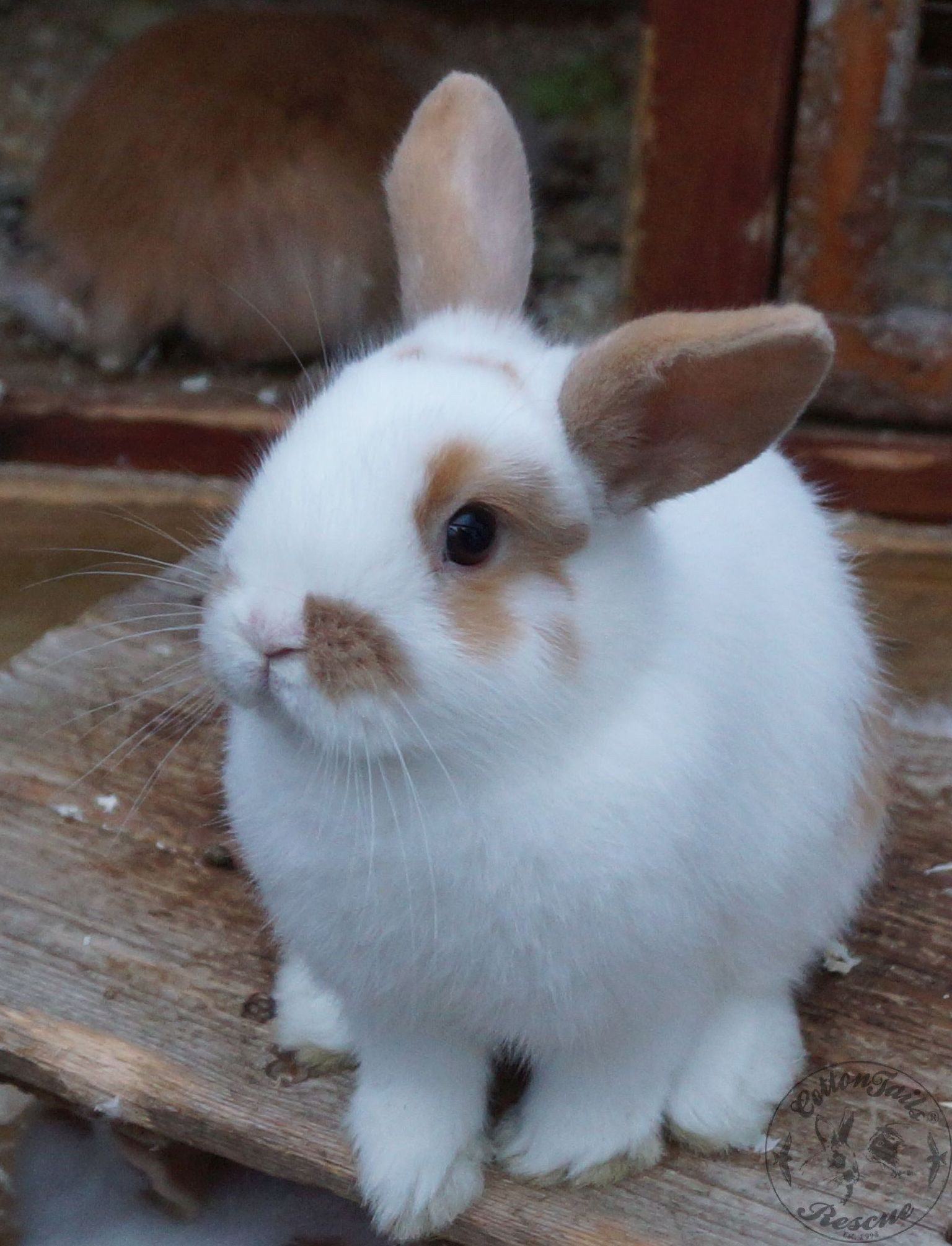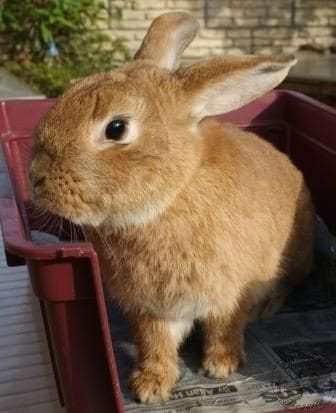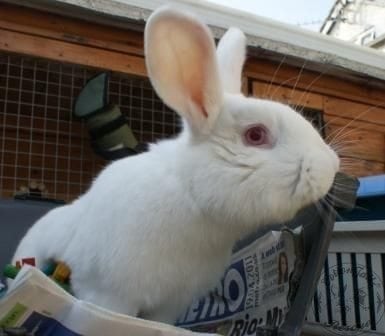Whether experienced or novice, most rabbit owners can spot fundamental problems with their pets. Few know what to look for and where, especially if they have just purchased the rabbit. This is also true for people who keep many rabbits, such as rescue centres or breeders, especially when a new inmate arrives. A thorough but basic health check must be carried out before the rabbit is allowed onto the premises, even if it is to be quarantined for a few weeks first.
The following was written with this in mind, guiding what one should look for when examining a newly arrived rabbit. Try to get as much information about the rabbit first from the previous owner, such as age, background history, and diet. This will help settle the rabbit into the new environment quickly and efficiently. Treatment regimes or complete lists of symptoms are not included here, as this information is available elsewhere on the website, together with advice on neutering, vaccinating and general care.
General Observation
Before taking the rabbit out of its carrying box, cage, or run, spend some time just looking at it, watching for anything unusual such as head tilt (possibly indicating E. cuniculi or inner ear problems), laboured breathing, sneezing, etc. (possibly indicating snuffles, but not to be confused with fast breathing of a stressed animal). Also, be alert for signs of myxomatosis, such as swelling around the eyes, nose, ears and genitals. Eye infections and dental problems can look similar to the early stages of myxomatosis, but either way, the rabbit must immediately be placed in isolation until veterinary opinion can be sought. See the article on common problems, illnesses and conditions on the website.
External Parasites
Lift the rabbit, check the fur for external parasites such as fleas, mites, and lice, and treat as appropriate.
Sex
Double check the sex of the rabbit – this must always be done regardless of what you have been told, as it is common for people to get the sexing wrong (see the sexing article on the website). At the same time, check for any sign of sexually transmitted disease with symptoms such as swelling and redness with crusting and dry scaliness around the genitals, possibly also around the nose and mouth. Don’t confuse the red-purple, slightly swollen vulva of a female in breeding condition, as this is normal and not an indicator of disease. Although sexually transmitted diseases often get better by themselves with the aid of antibiotics, the rabbit will remain a carrier for the rest of its life, making this disease highly contagious. Also, be aware that males that have been neutered for longer than a few months will have no testicles or penis, and this can be confused with a female if you are not familiar with sexing rabbits. If the rabbit is an entire male, check for any testicular swelling, which could indicate a testicular tumour.
Soiled Bottom
Check for soiling of the perineal region (around the genital and tail), which could indicate urine leakage or diarrhoea. Either of these conditions results in a very high risk of fly strike, and appropriate action must be taken quickly. Soiling is often due to inadequate diet (such as too much dried food, unsuitable vegetables, or sometimes dental disease). See the section on diet and feeding in the rabbit care article. It is, therefore, straightforward to resolve if the diet or any teeth issues are corrected. However, significant diarrhoea may indicate a serious illness, and vet treatment would be required (see article on gut stasis and mucoid enteritis). Urine leakage can have several causes, the commonest being E. cuniculi, but bladder infection, bladder sludge or stones, or tumours can also be to blame. See also the article on the condition “wet tail” on the website.
Teeth
Examine the front teeth for malocclusion (overgrown or misaligned teeth) and gum inflammation. Dribbling around the mouth may indicate dental disease with spurs on the back molars, but be aware that stress and fear can also make a rabbit dribble slightly, so if there is any doubt, have a complete dental check done. Very pale gums and membranes may indicate dehydration or shock. Feel along the jawline for any swelling indicating an abscess or osteomyelitis.
Eyes and Nose
Check for discharge from the eyes or nose. Rabbits use their front paws as a tissue, so the fur on the inside of the front paws will be clumped if they have a nasal discharge. This would indicate a respiratory infection such as snuffles, which is highly contagious and almost impossible to cure, although it can be kept stable with treatment. Discharge from the eyes may indicate an eye infection or problems with the roots of the teeth pressing on the little tube that leads the tears away from the eye down inside the nose and out. This results in tears running onto the fur around the eye, causing soreness and infection if not treated. This condition can’t usually be cured but can be managed with treatment (another rabbit is often a solution as they keep the area clean with licking, but read the article on bonding before considering this). See the article on common problems, illnesses and conditions on the website.
Abdomen
Palpate the abdomen of a female to establish if there is a pregnancy, but this should only be done by an experienced rabbit keeper; otherwise, damage could result. Check the teats and glands of females for any sign of swelling, redness, or crusting. Such symptoms could also be an indicator of uterine and related cancers.
Paws
Check the pads of the front and back paws for soreness and ulceration, which is common in overweight rabbits and rexes, and clip back any overgrown claws. See the article on common problems, illnesses and conditions on the website.
Weight
Assess the condition of the rabbit to establish if it is too fat or thin. Give a general checkover for lumps and swellings, and watch when the rabbit moves around to ensure all leg movement is normal. An average-sized rabbit usually weighs between 2 and 2.5kg, but looking for excess bulges over the shoulders, abdomen, and dewlap is more important.
Ears
Examine the ears thoroughly for injury, infection, swelling and internal ear mites (crusts are visible deep inside the ear, with redness of the delicate skin).
Movement and Appetite
Once the rabbit has been placed in its pen, observe that it is eating and drinking and is hopping around normally (some rabbits walk instead of hopping if they are very scared, so watch for several minutes before making any judgement). If the rabbit is used to a water bowl, ensure it knows how to use a bottle if you intend to take the bowl option away. Try and find out what food the rabbit was used to and whether it was used to fresh vegetables and grass, as it is important not to make any sudden change to the diet.



